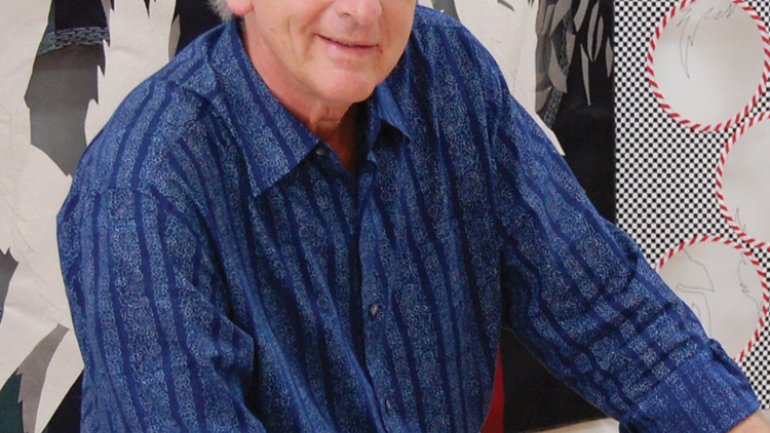The Long Game
The Long Game
Gerhardt Knodel would like to set the record straight. Although the textile artist left Cranbrook Academy of Art in 2007 after more than 35 years there, Knodel has done anything but retire. Instead, he has taken on the task of strategizing as an artist anew, a process that he compares to being a player at a game table. With themes of risk, tactics, and play in mind, Knodel has been enthusiastically creating a new body of work that responds to contemporary issues such as the recent financial crisis.
Knodel’s ability to create in response to his environment can be traced back to his childhood in Southern California. With a father who built homes for actors and directors, and a grandmother who worked extensively with textiles, the young artist picked up an enduring knack for making. “If you come from a home that has a beautifully tended garden,” he observes, “when you become an adult you remember how that garden was and what the processes were for maintaining it.”
He began making what he calls his “environments in cloth” in the late 1960s, as a graduate student at California State University in Long Beach. Taking advantage of the experimental nature of the art world at the time, he generated work using a wide variety of technologies, as well as weaving, knotting, and printing techniques. He also began investigating fabric’s transparency, multidimensionality, and shadow, properties his work would become known for. (His ingenuity made such an impression on the leadership at Cranbrook that, after graduating, he was invited to interview – and hired on the spot.)
With decades of teaching and 12 years as Cranbrook’s director under his belt, Knodel sees his return to the studio as an opportunity to take the qualities he’s grown to love about textiles, including their rich history, and contemporize them. It’s also a chance to make use of his vast collection of fabric, including a bag of 28 kimonos he brought back from Japan.
Freely repurposing his “stash” has brought with it new uncertainties, feelings that led to the title of his latest series: Let the Games Begin! From shadow curtains and weavings to wall-mounted “dexterity games,” Knodel’s latest work is a feast not only for the eyes but also the hands, as many of the installations invite physical interaction. “All of the 15 games have basic visual structures rooted in textile design,” he explains. “I am interested in having the viewer experience common denominators among works that may be physically dissimilar, but related in content.”
Some seven years in the making, the series debuts this fall at Wasserman Projects in Birmingham, Michigan. For Knodel, living with the work for so long further enriched his relationship with it. “Formerly, I regularly faced deadlines contractually established by a client or gallery,” he says. “This approach allows for new levels of discovery through reaction, even after I thought a work was complete.
“This slower process also enriches the dialogue with each piece, allowing the work to dictate what it needs in order to fulfill its potential,” he adds. In this sense, Knodel has become not only the maker, but also a player of his own game – a game that’s just getting started.
“Let the Games Begin!” runs at Wasserman Projects in Birmingham, Michigan, through November 7. Jessica Shaykett is the American Craft Council librarian.

